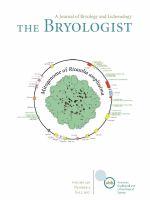Three experiments were conducted to test new and established methods for lichen transplantation in the southern Appalachian Mountains. First, small fragments of Graphis sterlingiana, Hypotrachyna virginica and Lepraria lanata were placed on medical gauze attached to the most common substrate of each species to test the feasibility of transplanting narrowly endemic species with this established method. The medical gauze did not withstand the weather conditions at the transplant site, so a second experiment was conducted to test more resilient materials. Burlap, cheesecloth, medical gauze and a plastic air filter were directly compared for their use as artificial transplant substrates with Lepraria finkii as the test lichen. Third, transplants of Usnea angulata were established to test its amenability to transplantation by hanging fragments on monofilament. The first two experiments were established on Roan Mountain, North Carolina, and the third experiment at Highlands Biological Station, North Carolina. In the first two experiments medical gauze did not withstand local weather conditions and nearly all gauze fell from the trees within 6 months. The plastic air filter and burlap performed best as artificial substrates for transplants, with a 60% and 80% success rate, respectively. Cheesecloth remained attached to the trees, but only 20% of lichen fragments remained attached to the substrate after one year. In the third experiment U. angulata grew 3.5 ± 1.4 cm in the first five months and 1.8 ± 1.5 cm in the next four months, exceeding previously reported growth rates for this species. These results advance methods for conservation-focused lichen transplants, and expand established methods to a new region and new species.
How to translate text using browser tools
16 August 2017
Testing lichen transplant methods for conservation applications in the southern Appalachian Mountains, North Carolina, U.S.A.
Jessica L. Allen
ACCESS THE FULL ARTICLE

The Bryologist
Vol. 120 • No. 3
Fall 2017
Vol. 120 • No. 3
Fall 2017
assisted migration
restoration
translocation




